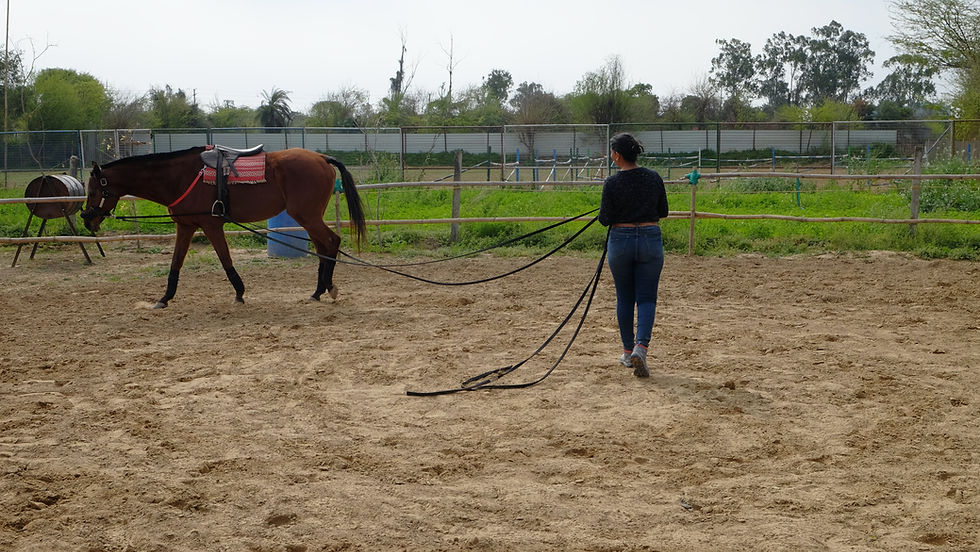Why it’s been hard to teach horsemanship in India (and why it's changing)
We opened the Manjeev Natural Horsemanship (MNH) centre in Gurgaon, India, in 2016 as part of our dream to spread effective and gentle horse training methods. Prior to that, we had been travelling to and working in different equestrian businesses around the world, from polo clubs in Mongolia and Argentina to horse safaris in Mozambique, as well as time spent on training farms in New Zealand and in the UK. Getting exposed to different cultures and learning from many talented horse people was incredible. We thought this would give us all the tools we needed for our own horsemanship school in India.
But things didn’t turn out quite as planned.
We’ll share with you the two main reasons why we’ve struggled so much to teach horsemanship to people in India, as well as why we’re very excited that things are changing.
The difference between riding, handling and training a horse
The term “horsemanship” usually refers to handling, training, and riding horses. But we feel it’s helpful to separate the “handling & training” part from the riding part. While there are many overlaps between the skills required to handle & train a horse and the skills required to ride, it’s perfectly possible—and common—for a rider not to know handling & training, and vice versa (though less common) for a handler & trainer not to know much about riding.
At MNH, we made the choice to focus on handling & training, not riding, because we felt it made sense to learn about horses from the ground before sitting on their backs. The best, we feel, is to first learn about horse behaviour, equine psychology, and groundwork training methods and then apply them when riding.

Ana, one of our students from Germany
Two reasons it’s hard to teach horsemanship in India
Since we opened MNH, the vast majority of our students have come from other countries. While we’re delighted to be able to teach these methods to anyone who wants to learn, it took us some time to understand why people in India have been much, much slower to pick up on the desire to learn horsemanship (the handling & training part). We’ve boiled it down to three reasons:
1.Most horse owners & riders don’t need to handle their horses
Thanks to access to cheap labour, most owners in India have many grooms to take care of their horses and stable management. If you live in a country where you have to take care of horses yourself or where you have limited help, your incentive to learn how to do it properly yourself is much bigger. Learning horsemanship helps you save money on trainers, it helps you have better control over your horse management, and it helps you understand horses much better.
In India, as a horse owner or rider, there is almost no incentive to want to learn horse handling & training because you don't have to handle or train the horse. Your groom is doing it for you.
2.There is little incentive to invest in your groom
The issue of creating a space for grooms to learn about horsemanship is something that we’ve been working on for years. It’s a complex issue, and we will write about it in more detail in another blog post. The short version is that grooms aren’t interested in going to a school to learn about horses; they mostly view it as an unskilled job. Horse owners, meanwhile, have little incentive to send their grooms to get trained because of the high turnover of farm staff. They rarely stay longer than a few months in the same place. This is exacerbated by a big drain of Indian grooms to the horse industry, especially racing, in countries in the Middle East and Asia-Pacific.
Having said all that, things are changing!
In the past two years, however, we’ve seen a big uptake in the number of Indians wanting to learn horsemanship. Even with access to grooms, more and more people here now want to get involved with horses, not just ride them. They want to understand how horses think, why they behave the way they do, and learn how to handle, train, and care for them in the best possible ways.
While we continue to love welcoming our students from all over the world, we are very excited that more and more people in India want to explore horsemanship.

Pranita, a student from Mumbai















Comments